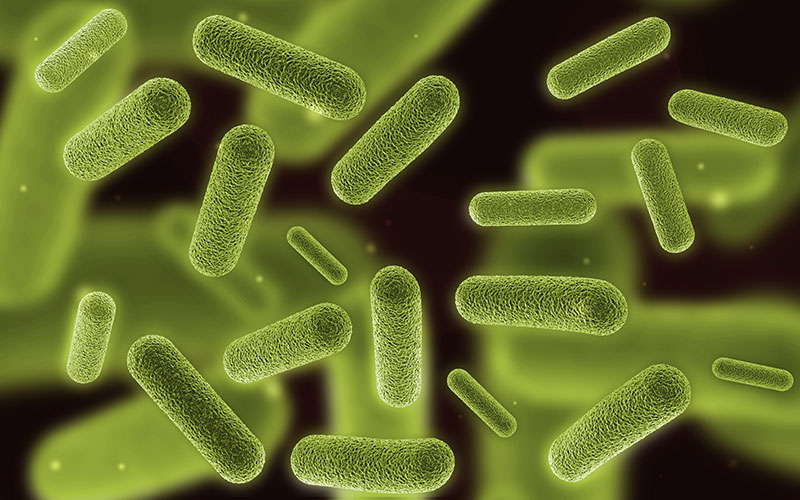How the U.S. Soybean Industry is Targeting China, Japan and Other Key Foreign Markets
Considering some 60% of U.S. grown soybeans are exported in the form of bean, meal, or oil., the state of world is critical to the success of America soybean farmers. In addition to the usual challenges – weather, MRLs, regulations, pests of all sorts, 2020 has added COVID-19 (coronavirus), tariffs, and trade agreements.
The U.S. Soybean Export Council (USSEC) was created to differentiate, build a preference for, and ensure market access for U.S. soy, says CEO Jim Sutter. “We’ve been trying to diversify markets. We’ve got a big presence in China. We’ve been working in markets all around the world, and we’re very appreciative of U.S. farmers and the way they produce the crop sustainably. That is a great thing for us to be marketing.”
The USSEC works in countries around the world to expand access for U.S. soy growers. It’s not about building the soy markets in those countries. It’s about bringing U.S. soy to those markets, which often means ensuring foreign governments and growers that it’s not about replacing native producers.

Jim Sutter, CEO U.S. Soybean Export Council
“If the government is not supportive of what it is that we’re doing, we better tread very lightly,” Sutter says. “And, in some of these places they produce a few soybeans themselves. We try not to go in and give the impression, we’re going to put their producers out of business. We want to work with their poultry industry; we want to work with their feed industry — improve the hygiene or feed safety, improve the way they produce their poultry, grow demand, but don’t put their producers out of business.”
It’s a matter of supplementing what native growers produce. The USSEC team meets with officials from a given country’s department of agriculture to explain the organizations intentions. The group also seeks guidance from the USDA’s Foreign Agriculture Service to learn how to best work in that country.
Crop Inputs
The more sophisticated the market, the more likely crop inputs will be part of the conversation.
“We talk to them about the changes that are happening in the U.S. and how it’s becoming more sustainable,” Sutter says. “Also, we focus on market access. There, part of what we do is play defense. Maximum residue levels (MRLs) are being set by various countries around the world. We need to make sure they’re not at levels that don’t work for our farmers, and that they’re being consistent with Codex (Alimentarius) and with their WTO (World Trade Organization) obligations.”
One way the USSEC does this is by being a part of and working with members of the International Soy Growers Alliance (ISGA). ISGA includes growers from Brazil, Argentina, Canada, Paraguay, Uruguay, and the U.S. — the main soybean growing countries.
“On a pre-competitive basis, we go and talk to buyers in Europe, buyers in China, or other places and say to them, ‘You know, if you lower these MRL levels too low, you won’t have any supply,'” Sutter says. “We try to give them confidence in the safety of the product.”
The sustainability part of the conversation is a competitive advantage for the U.S.
“In terms of some of these products, in the U.S. we have an advantage,” Sutter says. “Paraquat is an issue Europeans are very concerned about. In the United States, paraquat is not often used as a desiccant on soybeans. In South America, paraquat is often used as a desiccant. It’s a bit of a competitive advantage for the U.S. in that we don’t have that issue.”
Because growers are often part of the team that visits foreign markets, Sutter believes the message is more likely to be listened to.
“The local governments hear from the NGOs; they hear from people who say we don’t want any MRLs. The industry comes and says, ‘If you set the MRLs at zero, we’re not going to be able to feed our people. What are you going to do?’ They hear them and try to come up with a middle-of-the-road compromise.”
The USSEC does tailor its message for level of sophistication in a given country. The organization typically divides those countries into three types of markets — mature, expanding, and emerging.
Mature Markets
Sustainability is an important message for mature markets.
“In places like Europe and Japan, they are very interested in knowing how their food is produced,” Sutter says. “Where does it come from? Is it on land that was recently deforested? Is it using child labor to be produced? All of those kinds of things are very important to those consumers.
“We have a great message, a great track record in terms of sustainability of U.S. soy. In a mature market, we would lead with that. We also talk about the quality advantages of U.S. soy. They generally have sophisticated feed manufacturers, sophisticated livestock producers that will understand very well if we start to talk to them about the concentration of amino acids, the differences in digestible energy — those kinds of things. There we also talk about all the ingredients of the U.S. soy advantage.”
Expanding Markets
Keeping access to foreign markets is critically important for U.S. growers. To do that, the USSEC must also work in expanding markets like China, Mexico, and Viet Nam. Sustainability isn’t the critical message for those markets, thought it can be part of the discussion.
“There’s a lot of social media, and people will probably start to look at sustainability,” Sutter says. “There are probably not important restrictions or purchasing regulations tied to sustainability, like there are in Europe. So, there we would focus more on quality, differentiating the quality of U.S. soy versus other origins. And we would be doing work with poultry producers, swine producers, and aquaculture producers, trying to teach them how more efficiently how to produce the products themselves.”
Emerging Markets
For emerging markets – Nigeria, Egypt, Pakistan, Bangladesh – sustainability is of small concern.
“There we would really have an emphasis on taking over professors from U.S. universities, experts from the industry, to really help teach some basics about how to produce chickens, how to produce fish,” Sutter says. “Depending on the market — we’re doing work in Nigeria — that is a very, very basic-level market. We can start at a pretty low level there and work up. Go to a place like Pakistan, it’s more advanced. It’s still what we call an emerging market, but they’re a few years ahead. We tailor our course offerings or the seminars that we put on to be at the right level for the marketplace.”
China
The Phase One agreement was signed in January.
“People were disappointed that it didn’t result in overnight purchases,” Sutter says. “The first thing that needed to happen, was the Chinese government needed to give the importers a way to get a tariff waiver. They didn’t remove their tariffs; they just made a commitment to purchase. The U.S. government was careful to say, ‘We didn’t tell them they had to remove their tariffs. We just told them they needed to buy this much, and China said they would do it.’”
So we were very happy when the Chinese government issued a statement (in late February) that told importers how to apply for a tariff waiver. Once they’re granted a waiver, it will be for the balance of the calendar year. They can request how much tonnage they want. And then they’ll be able to import that quantity of U.S. soybeans tariff free. That’s a critical first step to seeing this happen.”
The problem is that February and March are not the normal time of year for a lot of U.S. soy to be purchased by China. This is the South American window. In September, “we ought to see a large quantity of U.S. soybeans being purchased by China under this new Phase One agreement,” Sutter says. “People say, ‘Gosh, we need it now. We don’t want to wait until then.’ It’s a little bit unfortunate. That’s just the way it’s going to work.”
Sutter says there might be some purchases between now and then.
“There are people in China who prefer the quality of U.S. soybeans, and the ease of doing business with the U.S., the quick shipment they can get off the PNW (Pacific Northwest),” he says. “So, we’ll probably see some exports, but I don’t look for big exports to China until we get more into the second half of the calendar year.”






